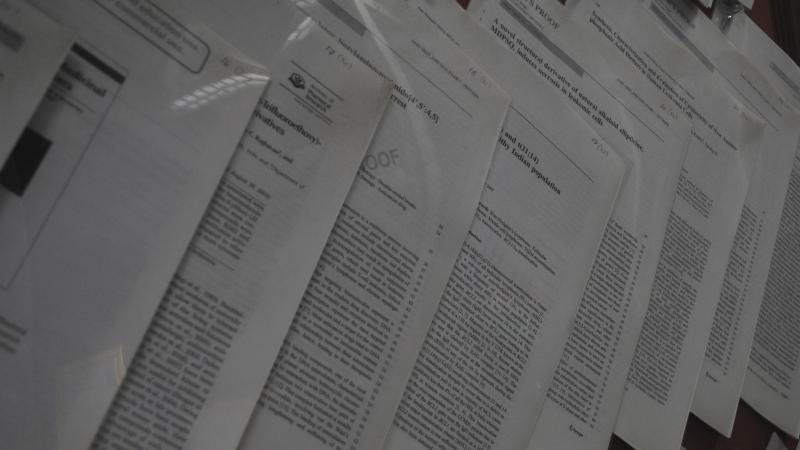
Sweden's recent decision to terminate a contract with a scientific publisher, because the publisher was not making sufficient progress towards Sweden's demands for open access, has given rise to much jubilation in some quarters. It is argued that Sweden has stood up for the interests of the broad general public against the pecuniary interests of the scientific publishing industry.
The argument made by proponents of open access journals is that the results of publicly-funded research must be made freely available to the public. The public, it is argued, have already paid for the research as tax-payers, and should not be asked to pay a second time to access publications that emerge from that research. While the argument appears compelling at first sight, there is more to the issue than meets the eye.
Open access journals are journals whose content is available free of charge on the Internet. Readers can freely access papers in open access journals without any financial or legal barriers. In contrast, subscription-based journals charge a subscription fee to grant access to the research papers published in such journals.
Most publishers of journals, both open-access and subscription-based, do not pay authors, editors or reviewers. Nevertheless, they must bear expenses related to typesetting, and if they produce a paper version, costs associated with printing and distribution. In conventional, subscription-based journals, these costs are then recouped from subscribers, typically universities, public libraries, other corporate and individual subscribers.
If research publications are made freely available to readers through open access publishing, the publishers are forced to look elsewhere to recoup their costs. One popular source is the authors of these publications themselves who are increasingly asked to pay publication fees (sometimes called author fees, page charges or processing fees). Researchers often receive grants from universities and funding agencies to pay these fees. However, these charges increase the difficulties of getting published for researchers from less well-funded institutions, often located in third-world countries.
This system of open access journals funded by author fees creates powerful perverse incentives for publishers. If more research papers are published, revenues and profits go up. As publishers clamour to publish more and more research papers, reviewers are increasingly pressured not to reject research papers that are submitted, and the quality of research published tends to suffer. A few years ago, a sting operation by Science revealed that more than one hundred and fifty open access journals accepted a spoof paper that any reviewer with a high-school level knowledge of the field would allegedly have rejected, with one charging nearly two lakh rupees as author fees. Moreover, 60% of the decisions were allegedly made without any sign of peer review.
Academics are often under immense pressure to ‘publish or perish’. Open access publishing funded by author fees feeds a system where academics may be evaluated more by quantity than quality. There is a danger of universities filling up with people of questionable academic credentials whose primary skill is not 'research', but gathering and husbanding the resources needed to publish a large number of research papers, albeit of questionable quality, in these open access journals.
Several commercial organisations use published research to drive product development. In the traditional subscription-based model of publishing, they pay for access to the journals, thereby bearing some of the cost of publication. But under the open access regime, they gain free access to the research findings that can add to their profits. One has to ponder about whether publicly funded research must subsidise private profit.
Despite these compelling arguments, few would argue with the proposition that research findings ought to be accessible to the public. It is worth bearing in mind that access is not reducible to the cost of a subscription to the journal. It is also necessary for readers to have a basic education and for papers to be written in a comprehensible language. Nevertheless, once these conditions are met, the high cost of the subscription to journals often poses a barrier that needs to be addressed.
One successful model for providing free, public access to the results of research is arXiv.org, an electronic repository of preprints of research papers. It is funded by Cornell University, the Simons Foundation and voluntary contributions by other universities, and therefore free to use for both authors and readers. Scientists can post papers to the repository, often in addition to submitting them to a peer-reviewed journal. However, one shortcoming of this model is that there is no peer review of research papers posted to repositories like arXiv.org, and hence there are no quality controls. Nevertheless, there is a provision for authors to state whether their paper has been accepted for publication in a peer reviewed journal, thereby addressing reader concerns about quality.
To avoid potential copyright battles between researchers who wish to post their papers to electronic repositories like arxiv.org and publish them in journals, in Germany, researchers have gained the legal right to post their publications on the Internet; a right that other countries would do well to replicate.
Another intriguing possibility is to have electronic-only journals that make use of electronic repositories like arxiv.org. Submitting a paper to such a journal would involve nothing more than sending a link to the preprint to the editor who would, in turn, find a reviewer. Upon completion of the peer review process, the editor would grant the author a virtual ‘badge’ to display alongside the paper on the electronic repository, without any need for the journal to typeset the paper or run an independent website. Since editors and reviewers are typically not paid in any case, a journal operating on these lines would cost very little money to run.
The ideal solution is for journals to be fully funded directly by universities, governments or professional societies, thereby making their use free of charge for both authors and readers. In such a system, we can ensure that the incentives of publishers are firmly aligned with their envisaged role as gatekeepers of good science. Such a system need not be prohibitively expensive if measures like those discussed above are adopted.
Instead of the unbridled clamour for open access journals, science would be better served by journals that can provide access to the public while safeguarding the quality of research. Alongside this, governments and universities must also make greater efforts to communicate the results of scientific research in a manner that is understandable to the general public.






